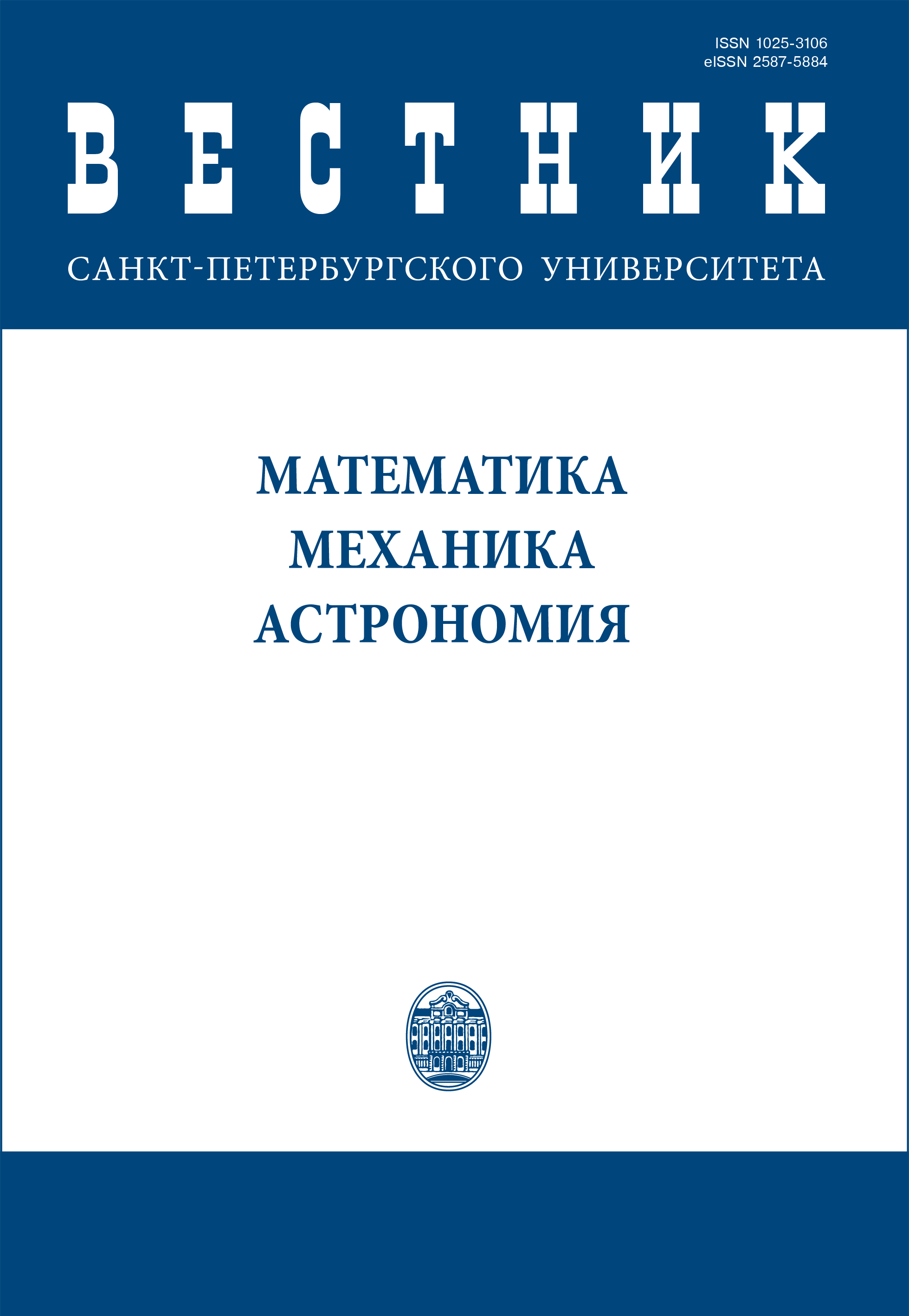Zero velocity surface in the general three-body-problem
DOI:
https://doi.org/10.21638/spbu01.2023.114Abstract
The zero-velocity surfaces of the general planar three-body problem are constructed in the form space, the factor-space of the configuration space by transfer and rotation. Such a space is the space of congruent triangles, and the sphere in this space is similar triangles. The integral of energy in the form space gives the equation of the zero velocity surface. These surfaces can also be obtained based on the Sundman inequality. Such surfaces separate areas of possible movement from areas where movement is impossible. Without loss of generality, we can assume that the constant energy is −1/2 and the sought for surfaces depend only on the magnitude of the angular momentum of the problem, J. Depending on this value, five topologically different types of surfaces can be distinguished. For small J, the surface consists of two separate surfaces, internal and external ones, the motion is possible only between them. With J increasing the inner surface increases, the outer surface decreases, the surfaces first have a common point at some value of J, with a further increasing of J, their topological type changes and finally the zero-velocity surface splits into three disjoint surfaces, the motion is possible only inside them. Examples of the corresponding surfaces are given for each of these types, their sections in the plane xy and in the plane xz and the surfaces themselves are constructed, their properties are studied.Keywords:
general three-body-problem, zero velocity surface, region of feasibility
Downloads
Downloads
Published
How to Cite
Issue
Section
License
Articles of "Vestnik of Saint Petersburg University. Mathematics. Mechanics. Astronomy" are open access distributed under the terms of the License Agreement with Saint Petersburg State University, which permits to the authors unrestricted distribution and self-archiving free of charge.




